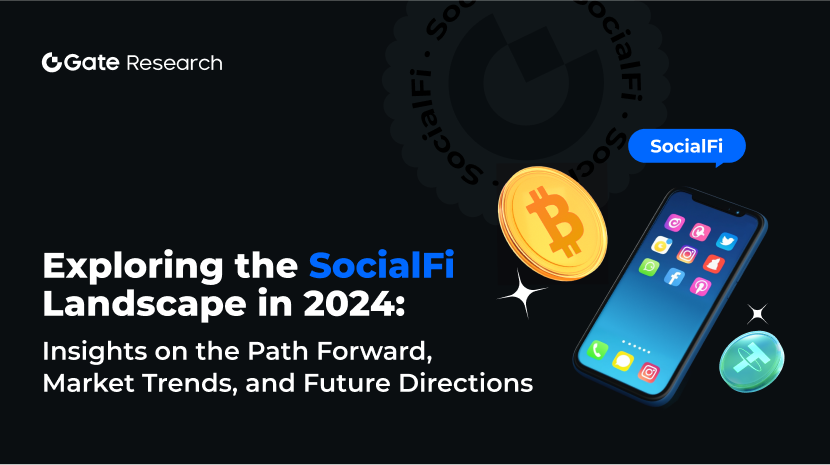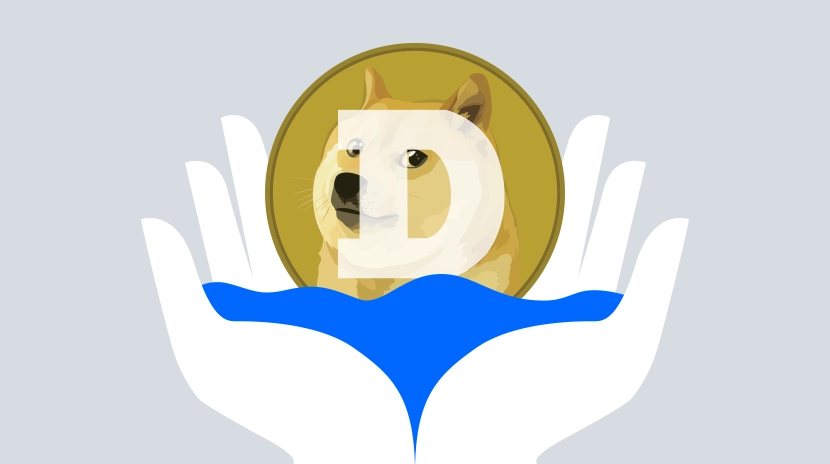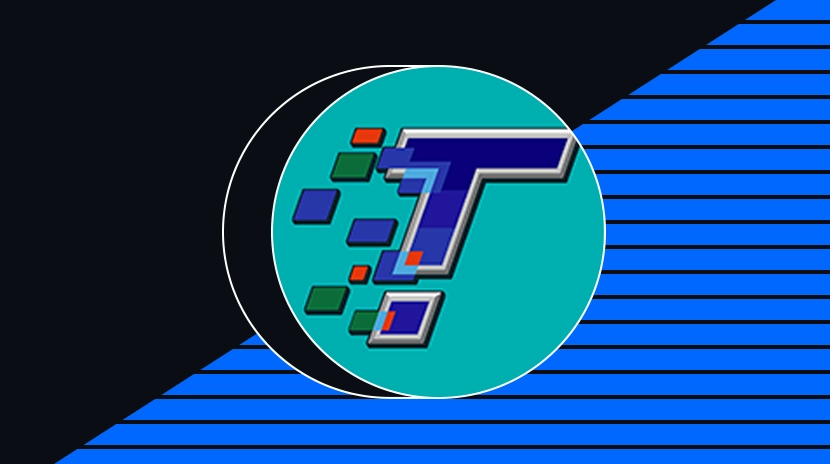Farcaster 大转型,a16z 们花 1.8 亿美元砸塌 Web3 社交
ABCDE 宣布停止新项目投资并中止二期基金募资,引发了 Crypto Twitter 上又一轮「VC 已死」的哀叹,但上一周期 VC 们风光无两,靠造叙事抬估值,把一张张 PPT 包装成互联网的未来。
作为在两轮牛市里总共融资 1.8 亿美元的去中心化社交龙头 Farcaster 无疑是 VC 叙事的最佳代表,但 Farcaster 的答案也正在逐渐清晰——不再押注「去中心化的想象力」,而是押注「资产化的执行力」。Farcaster 不是失败的产品,而是加密世界里又一次叙事塌陷,VC 们发现他们并没有重构世界的能力,只是在一场预支估值的故事里套现退场。
Farcaster 到 Warpcast,再到 Farcaster
近日,Farcaster 协议联创 Dan 宣布,团队正在考虑将当前名为 Warpcast 的官方客户端应用重命名为 Farcaster,并同步调整其网页端域名为 farcaster.xyz,意在简化品牌体系,解决新用户在协议与应用之间混淆的问题。
2021 年,Farcaster 以桌面端产品推出,2023 年转型为移动端与网页端应用并改名为 Warpcast。尽管最初更名是认为如果客户端(Warpcast)和协议本身(Farcaster)名字不同,会更方便其他开发者基于协议构建自己的客户端,从而带动协议用户增长。但最终这套设想并没有真正落地,据团队反馈,现实中绝大多数用户仍是通过 Warpcast 注册账户、接入协议。
去年 5 月,BlockBeats 曾撰文对 Farcaster 生态进行分析,彼时前端应用 Warpcast 掌握着 Farcaster 协议的核心功能,诸如私信、Channel 等,整个生态马太效应十分明显,非官方客户端只能夹缝中求生存、找到 Warpcast 的痛点进行功能开发,尽管如此还是有诸如 Supercast、Tako 等应用采取差异化策略发展自己的社交平台。
相关阅读:《Farcaster 上没机会了?》
而如今 Farcaster 团队正式宣布将前端 Warpcast 更名为 Farcaster,某种程度上无疑背刺了那些选择 Farcaster 协议的前端应用开发者们。
其实这次更名操作只是 Farcaster 转型的一个小缩影,自去年 10 月以来,Farcaster 协议在产品更新、战略布局、人员变动等多方面作出了调整。
一个细节是,在此之后的开发者会议讨论中不再区分「Farcaster 议题」与「Warpcast 更新」部分,而是聚焦于整体的具体问题,比如 Growth、Direct Cast、降低注册成本、Hubs 稳定、FIP 治理、身份系统。
但从用户粘性来看,Farcaster 迄今未能走出冷启动平台的典型困境。根据 Dune 数据,自 2023 年下半年开放注册以来,其 DAU/MAU 比例长期徘徊在 0.2 左右,仅在 2024 年初因 DEGEN 爆火出圈短暂触及 0.4,随后迅速回落。
DAU/MAU 比例是指每日活跃用户与每月活跃用户的比率,用于衡量用户每月与应用程序互动的天数,比值越趋近于 1 表明用户活跃度越高,在比值低于 0.2 时,应用的传播性和互动性将会很弱。

相比之下,Web2 早期社区产品如 Reddit 或 Mastodon,DAU/MAU 稳定维持在 0.25~0.3 区间。即便是用户体量更小、话题更垂直的社交应用如 Discord 小服务器,也往往能保持 0.3 以上的活跃比。Farcaster 的数据说明,尽管其在 Crypto 社区中保持了较高话题度,但用户使用习惯并未真正建立,活跃用户主要集中于少数重度创作者与链上原住民,尚未形成可持续的内容消费与社交闭环。
做内容?做资产?Farcaster 没有答案
在最初的产品逻辑中,Farcaster 试图通过内容工具构建去中心化社交图谱,如曾经被寄予厚望的频道(Channel,类似话题小组)是这个图谱中承载社群与流量的核心单位。但很快资产的激励效应远超内容的自组织能力,产品逻辑随之偏转。
被抛弃的频道
2024 年 2 月,社交代币$DEGEN 在 Warpcast 中名为 Degen 的频道中走红,成为 Farcaster 破圈的主要推动力。彼时 Farcaster 放开网络注册才仅四个月,每日活跃用户突破 3 万人。随着$DEGEN 代币发酵、以及出现诸如 Higher 等同类受欢迎的频道代币,Farcaster 的日活最高触及 7 万人。

Farcaster 团队意识到频道是一个能将人、注意力、流动性聚集在一起的载体,Farcaster 创始人 Dan 认为这是区别于推特等中心化社交媒体的重要差异,允许在更大的社交图谱中出现小社区。虽然只是 Warpcast 的一个功能,但计划完全去中心化,通过培养这些小型、集中的社区,频道可以增强用户参与度,创造更亲密的社交体验。
团队从而确立了频道的核心开发定位,围绕其创造了许多概念,包括频道主的各种权益、频道所有权,还衍生出了以频道为运营核心的项目和客户端。Dan 甚至呼吁用户不要抢注频道名称,以便以后将其出售给品牌,因为曾闹出了播客节目 Bankless 和用户争抢频道名称的故事。
但这样的做法并未持续很久,2024 年 7 月,Farcaster 协议的网络扩展瓶颈浮现,开发者会议上,团队表示将暂停频道的去中心化,并重新思考实现路径。
在回复用户关于为何不能在某些主题频道发言时,Dan 表示频道不会带来任何额外的分发加成,过去曾经有过,但效果不好,他称「频道适合用来运营社区,但不适合讨论某个话题,我们并不会把它们推荐给新用户。」从历史数据看,频道对用户增长的推动有限,鉴于资源有限,Farcaster 团队短期内将没有继续为频道新增功能的计划。
产品优先级上取而代之的是 Mini App 和 Wallet,这让 Farcaster 从一个偏向内容和社交图谱的社交协议转变为一个侧重交易的协议,因为后者在 Crypto 能够吸引更多原生用户。
内置钱包加剧垄断
在一次播客中,Farcaster 联合创始人 Dan 分享了他对「用户」这一概念的最新理解:仅注册账号并进行轻度互动的用户,虽然在表层上增加了活跃度,但真正为网络带来价值的,是那些持有加密资产、并愿意进行链上交互的钱包用户。这种用户细化认知,直接影响了团队在钱包系统上的产品策略。
2024 年 11 月底,Farcaster 开始探索在应用内集成可交易钱包,以促进链上交易。目标是通过提升链上交互频次,增强生态粘性与货币化潜力。事实上,每位 Warpcast 用户在注册时已默认创建一个「Farcaster 钱包」,它绑定用户身份、用于登录 Warpcast 和 Frames,但由于仅保存在手机本地,功能上仍偏向认证与签名,而非资金流动。
相比之下,新上线的「Warpcast 钱包」则是一个可收发资产的钱包,用户可以在注册时自动生成,并通过该钱包进行代币充值、兑换、转账以及链上交互。
Farcaster 开始内置可交易钱包这个时间节点,很难不让人联想到 Clanker 的出现。
Clanker 是 Warpcast 上的一个代币发行 AI Agent,用户发帖并艾特 Clanker 就可以在 Uniswap 发布可交易代币,其官方代币$CLANKER 在去年 11 月暴涨 20 倍,使 Base 以及 Warpcast 成为同 Solana 在 AI 概念赛道的竞争者。也因为$CLANKER 的造富效应,Farcaster 的日活用户突破去年夏季以来的新高。

与$DEGEN 命运不同,作为同样从 Warpcast 内跑出来的破圈标的,$CLANKER 从一开始就受到团队及核心圈的关注与支持。不过,在这个过程中,Agent、DEX、C 端钱包等都从这场资产发行狂欢中获益,Warpcast 并没有获得任何经济上的回报。
Clanker 的成功让团队意识到,如果想要让更多链上交互在 Farcaster 生态中发生,光靠开放协议和第三方集成是不够的,必须掌握一个原生的可交易钱包系统,于是 Warpcast Wallet 应运而生。
从产品设计看,Warpcast Wallet 所扮演的角色,是打通用户社交与链上行为的桥梁——用户无需跳转,也无需连接外部钱包,点击 Frame 即可完成交易、打赏或领取空投。这种「社交即金融」的产品逻辑,让 Farcaster 更像是一个加密世界的「新加坡」——用户基数不大,但钱包活跃度与人均资金体量高。
根据官方文档,用户在使用 Warpcast Wallet 时需支付 0.85% 的手续费,其中 0.15% 归提供交易路由的 0x 协议,0.70% 则直接计入 Warpcast 收入。Dune 数据显示,自上线以来,Farcaster 协议的营收曲线持续增长,初步验证了内嵌钱包作为商业化路径的可行性。

但值得注意的是,Warpcast 内置钱包并没有写入协议层,再加上要将 Warpcast 客户端更名为 Farcaster,BlockBeats 了解到,一些 Farcaster 开发者认为协议正变得越来越中心化和垄断。
最大的创新,只是「微信小程序」
引入内置钱包后,Farcaster 在朝资产导向型社交应用的方向上推进得更加顺畅。官方曾表示,钱包的上线目的之一,是吸引开发者基于 Frame 框架构建应用,进而推动交易行为与内容分发的结合。
Frame 最早于 2024 年初推出,是一套运行在 Farcaster 协议之上的轻量级应用标准,允许开发者将小型程序嵌入社交客户端中。用户点击 Frame 后,开发者可以识别其钱包地址,并向其推送内容或触发交互操作。然而,随着 Farcaster 整体热度的下降,Frame 的使用也呈现出明显的衰退趋势。
为应对这一局面,Farcaster 于 2024 年底推出了 Frame v2。新版支持使用 HTML、CSS 和 JavaScript 构建具备接近原生体验的应用,开发者还可以借助 Mini App SDK 快速部署产品,无需经过应用商店审核流程。Frame v2 不仅提升了交互复杂度,还与内置钱包深度集成,交易属性进一步增强,整体体验更接近微信小程序。

2025 年 3 月,Scalar Capital 及 Bountycaster 联合创始人 Linda Xie 加入 Farcaster 团队,负责开发者关系,重点推进 Frame 的开发与推广。与此同时,Farcaster 推出「空投计划」,鼓励开发者借助 Frame v2 构建应用并通过资产空投触达用户。这一机制虽非官方代币空投,但有效激活了用户增长。3 月中旬,Farcaster 日活跃用户短暂突破 4 万,创下阶段性高点。

2025 年 4 月初,Farcaster 将 Frame 正式更名为 Mini App,并在 Warpcast 客户端底部导航栏中与 Wallet 并列。
当前,Warpcast 内已集成一批支持链上交互的轻量应用,Mini App 正式成为生态的重要组成部分。但从用户增长数据来看,Mini App 的拉新能力尚未显著释放,其长期作用仍待观察。
「Web3」消逝,硅谷传奇们失效
其实,Farcaster 的变化并不特殊,它只是率先暴露出了整个 Web3 社交赛道的结构性困境——开放协议构不出用户规模,内容分发带不动交易,最终只能回到资产驱动这条唯一现实的路上。
我们真的需要一个「去中心化社交平台」吗?
从$DEGEN 到$CLANKER,Farcaster 每一次出圈几乎都与资产挂钩。真正拉动日活跃用户激增的,不是协议的演进,也不是客户端的创新,而是一次又一次由代币带动的财富效应。这种反复出现的模式揭示了一个核心事实:Farcaster 并非「没有人用」,而是「只有能赚钱时才会有人用」。这类平台的确满足了某种市场需求,但它们的角色,不是社交网络,而是资产分发器。
这并非偶然,而是加密叙事与现实使用之间长期错位的必然结果。
2020 年,BlockBeats 曾在一篇名为《世界讨厌现在的社交媒体》的文章中写道,去中心化与协议化或许是社交产品走出「平台困境」的唯一路径——在日益严苛的内容审查与平台垄断中,开放式协议承载了人们对「新社交秩序」的希望。
那时的 Twitter,被称作协议未遂的典型失败者:曾经短暂地开放 API,鼓励开发者构建生态,但最终还是走回广告平台与数据垄断的老路。而 Farcaster 最初的雄心,就是「不要成为第二个 Twitter」,它宣称要以开放协议为核心,连接开发者、用户与资产,实现共建共赢的去中心化社交网络。
但三年过去,Farcaster 复刻的却并非 Twitter 最初的协议理想,而是它后期的平台逻辑。曾经呼吁大家「基于协议构建自己的客户端」的 Dan,如今亲自宣布把客户端也叫 Farcaster,让「协议」与「产品」高度绑定。
这种转向在产品寻找 PMF 的层面是理性的,甚至可以说是现实的妥协,但它也说明:所谓「开放生态」在落地过程中,被悄然挪用为用户增长的叙事工具。开发者的角色不是要被真正扶持,而是用来讲故事。和当年 Twitter 关闭 API 时一样,开发者生态只是通向平台闭环的临时性燃料。
Farcaster 用三年时间证明了一件事:Crypto 语境下的社交协议,根本无法形成 2020 年我们所期待的生态。不是因为没有人开发客户端,而是因为没人用。不是因为不够去中心化,而是因为去中心化根本不是用户关心的事。
如今 SocialFi 同 GameFi 一样在某种程度上都被打上了死亡赛道的称号,前段时间某 KOL 在怼去中心化社交应用创始人说道,「做这么久流量,粉丝还没我一个个人普通 KOL 高,你有啥本事呢?你们公司融资 2M 做了啥?还没我一个 SOL 钱包的盈利多。」让人苦笑之余,也不禁感慨,靠叙事做基建的时代已经结束,所有 VC 项目的估值体系都在重构。
Crypto 不是「下一个互联网」
可 a16z 是这个叙事最大的布道者,很早就投资了 Twitter、Facebook 等社交媒体,当投资霸主遇上去中心化社交产品,自然无法忽视它的存在。正如 Google 高管所言「他们就像疯子,霸气地在每笔交易中都插上一脚。」
a16z 的全称是 Andreessen Horowitz,取自两位创始人的姓氏,由 Marc Andreessen 和 Ben Horowitz 于 2009 年创立。作为著名的软件捕手,互联网领域最耀眼的公司几乎全被押中:Facebook、Twitter、Airbnb、Okta、Github、Stripe 等,而且投资策略兼具早期的敏感和成长期的果断,既能在种子轮投中 Instagram,在 A 轮竞争中抢入 Github,也能在 G 轮领投 Roblox 1.5 亿美元。
其敏锐的前瞻性和激进大胆的投资风格在加密领域的布局上更是体现得淋漓尽致,2013 年投中的 Coinbase 上市时市值最高达 858 亿美金,是科技史上最大的上市公司之一。a16z 在套现 44 亿美元后,至今仍持有公司 7% 的股份。OpenSea、Uniswap、dYdX 等知名加密项目,也都是 a16z 的代表作。
2021 年以来的加密牛市让各大风投组合账面价值飙升,基金回报达到 20 倍甚至 100 倍,加密货币风投突然看起来像是印钞机。LP 蜂拥而入,急于赶上下波浪潮。风投公司募集的新基金规模是之前的 10 倍甚至 100 倍,坚信他们能复制那些超额收益。

Farcaster 无疑是这股流动性热潮顶峰的产物,2022 年 7 月,Farcaster 宣布完成了由 a16z 领投的 3000 万美元融资。两年后,Farcaster 又以 10 亿美元估值完成了 1.5 亿美元融资,Paradigm 领投,a16z crypto、Haun、USV、Variant、Standard Crypto 等大牌 VC 参投。估值高达 10 亿美元,成为 Web3 社交赛道史上最大笔融资。彼时《财富》杂志评论指出,这一估值更多是基金内部循环博弈的结果,而非市场需求真实映射。
加密投资人 Liron Shapira 所言:「如果风投仍有 LP 资本可用,他们选择投入 1.5 亿美元而非返还,就能额外收取 2000 至 3000 万美元的管理费用。」这不是市场对 Web3 社交的认同,而是一次资本运作的自洽闭环。《财富》杂志的文章还称一位因业务约束而要求匿名的消息人士表示,像大多数协议一样,他预计 Farcaster 将推出代币,投资者将渴望捕获其完全稀释的价值。
a16z 合伙人曾提出「技术浪潮常以组合形式出现」,以此为 Web3、AI、硬件的交集做背书。但他们回避了一个基本事实,移动互联网的每一次跃迁,无论是智能手机还是搜索引擎,都建立在真实的用户痛点与技术突破之上,而非资本叙事下的结构性泡沫。
「科技吃掉世界」曾是一个激进又精准的判断,但它的适用前提,是技术在基础层面具备碾压性优势。AI 之所以爆发,是因为它挑战的是个体智能——这是一种无法反抗的结构性能力差异;而区块链挑战的是「主权货币」,是两千年未变的信用体系。它不会像互联网或 AI 那样爆炸式地颠覆社会结构,只会在长周期中缓慢演化,被既得利益系统吸收、招安,并最终改写为原有秩序的一部分。
因此,现实是真正被用户接受并创造价值的加密系统,几乎无一例外都是「机制驱动+流动性优先」。从 Uniswap 到 Lido,从 GMX 到 friend.tech,它们依靠的是资金引力,而非理想主义。VC 那套「投资人推动世界改变」的模式,在这个世界并不适用。
Crypto 从来不缺社交工具,所谓协议理想只是这个行业对互联网平台时代的幻觉投射,它试图用共识机制替代商业模式,但最终只是将结构问题推迟到资产变现环节。
目前加密行业的最大危机,不是监管,不是技术,而是战略迷茫和需求真空。除去「赌场逻辑」和跨境支付,几乎没有任何一个领域展现出持续创造用户价值的能力。VC 的失败,本质是价值缺位下的方向性失语:如果这个行业本身没有真实价值,那价值发现从一开始就无从谈起。
声明:
本文转载自 [BlockBeats],著作权归属原作者 [Kaori],如对转载有异议,请联系 Gate Learn 团队,团队会根据相关流程尽速处理。
免责声明:本文所表达的观点和意见仅代表作者个人观点,不构成任何投资建议。
文章其他语言版本由 Gate Learn 团队翻译, 在未提及 Gate.com 的情况下不得复制、传播或抄袭经翻译文章。
相关文章

Gate 研究院:2024 年 SocialFi 格局探索:前行之路、市场洞察与未来趋势

2025 年十大中文加密货币播客推荐

一文梳理马斯克与DOGE的爱恨情仇

一文读懂 Tribe.run

四大Web3顶流IP盘点
